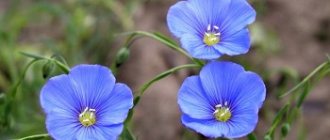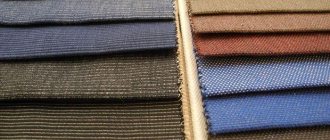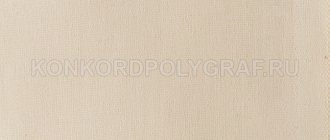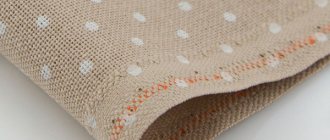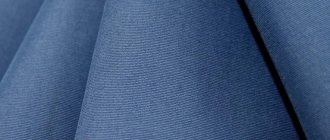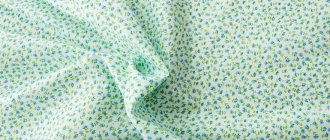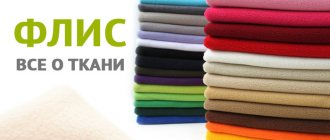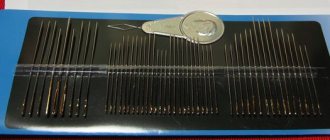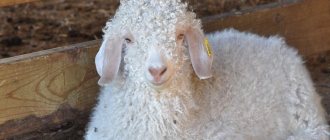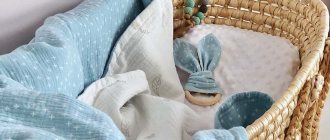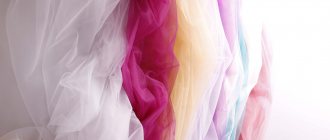Most often, calico is called binding material for books, paper folders and albums. This is plain weave cotton fabric (calico), processed in a special way.
In the old days, calico was used to make sheets and tablecloths and used it as a lining for jackets. Calico became part of the phraseological unit “another calico,” which means “another thing.”
"Another Calico"
This phraseological unit was widely used in the 19th century. The expression is captured in many works of the time. For example, M. M. Zoshchenko, “The Blacksmith was Offended,” 1925:
“Sawmilling is easy and fun. There is no harm in it. Although sawdust flies, it doesn’t fly into your mouth. And if you don’t open your mouth while working, it won’t do any harm. Blacksmithing is a different caliber. There are still coals, fire, smoke. Again, you can get burned. Or get sick from the smoke. This is definitely a harmful production.”
Phraseologisms were popular: completely different calico, wrong calico, and just like that calico. Often the expression was used without understanding the original meaning. In fact, the origin of the phrase is connected with the interpretation of the word binding - “imposition of circumstances.” Thus, the correct definition in phraseological units is “an interweaving of life situations, a complex, confusing matter.”
Staple binding fabrics
Staple fabrics are prepared from artificial or synthetic fibers, divided into pieces (staples), the length of which is close to the length of natural, for example cotton, fibers. Staple fiber can also be used for spinning in a mixture with silk and cotton fibers. The production of fabrics from staple fibers does not require the use of complex opening-raking, carding, tape and other machines, and is therefore cost-effective. The quality of staple fabrics is, as a rule, higher than the quality of fabrics made from natural fibers.
Binding staple fabric with an open texture is available in various solid colors with a density of 100 and 120 g/m2. The quality of binding staple fabric must meet the following requirements:
- hardness of at least 15 g for warp and 5 g for weft;
- curling not less than 10 s;
- a slight change in color is allowed during five-hour irradiation with a mercury-quartz lamp;
- color change is not allowed when applying neutral glue from the reverse side;
- color fastness to dry friction of at least 4 points.
Binding staple fabric with an open texture is used for the manufacture of binding covers for various types of publications of fiction, scientific and technical literature.
Characteristic
Great hopes were placed on calico for the preservation of books. Brief characteristics and properties:
- high density;
- high flexibility;
- abrasion resistance;
- resistance to color fading.
The material is not without its shortcomings. The canvas does not tolerate moisture and can become moldy in damp conditions. In very dry air, starch cracks and crumbles over time. In addition, the fabric is quite easily soiled, and its appearance is mediocre.
Composition and manufacturing technology
The material is made by finishing (impregnating) calico with starch, glue and other auxiliary solutions.
The fabric consists of fairly thick cotton threads. At the same time, it is thin, wrinkles, shrinks and is not very durable. To improve its characteristics and make calico, sizing agents (impregnations) are used:
- Untreated calico is painted, dried and ironed.
- A primer is applied from the inside out, consisting of casein glue, kaolin clay, starch and water.
- The same primer is used on the front side, but with the addition of dye. There can be one or several layers of primer.
- Sometimes the front side is additionally coated with a solution of nitrocellulose (latex), which makes the material look like a leather substitute and gives it water-repellent qualities.
Today, finishing is used to create fabric blinds and Japanese curtains. Thanks to technology, the thinnest fabric can be made rigid but flexible.
Questions and answers
Question: Is calico used today?
Answer: Yes. Binding material is widely used for making covers for books, diaries, and notebooks. It is glued to the spines of files during archival preparation. The fabric is produced, among other things, in Russia. The cost of rolled calico is 80-200 rubles per linear meter (with a roll width of 86 cm).
Question: What analogues of calico exist?
Answer: Lederine, paper vinyl, printed gauze, captal, laid paper, bookbinding leather, and ESKABOARD cardboard are used as analogues in bookbinding.
Calico ("calinkor" is an incorrect spelling) is a rigid, flexible, non-shrinking material with a slight gloss. It is obtained by soaking cotton fabric with starch and glue. The material is mainly in demand in the manufacture of book bindings and covers. It makes printed products durable and wear-resistant.
Sewing materials
Cotton and synthetic threads, as well as wire, are used to stitch together books, brochures and other publications.
Cotton threads
Cotton threads, depending on the number of twisted yarn threads (number of folds), are divided into three groups: three, four and six folds (Fig. 2).
To prevent the threads from unwinding and have a glossy appearance, they are dressed (size, polished), that is, covered with a thin layer of glue. To do this, they are placed in a cuvette with an adhesive solution, and then in a drying chamber, in which they are dried and simultaneously polished with brushes mounted on a rotating shaft. Matte threads are not polished, they are lightly starched. Finished threads for bookbinding and other industrial purposes are wound on paper cartridges.
The thickness of the thread depends on the thickness of the yarn and the number of folds. Threads are designated by numbers: 8, 10, 12, 16, 20, 30, 40, 60 and 80. Thinner threads have a higher number. For machine sewing of books and brochures, thread No. 30 is usually used, and for hand sewing, thicker threads, up to No. 10 inclusive, are used.
The threads must be strong and not break when sewing books and brochures, as well as when using sewn books. Threads should not twist or get tangled when unwinding and sewing. The thickness of the threads should be uniform and constant for each number. Threads No. 30 must, when tested on a tensile testing machine - a dynamometer, show a strength of at least 1.5 kg, and threads No. 10 - at least 2 kg. The stretch of threads under these conditions should be within 3-5%.
The strength of threads, as already mentioned, depends on the properties of the original cotton fiber and the degree of its twist - longer and thinner types of fibers and a higher degree of twist provide stronger threads. The flexibility of the threads also depends on the degree of twist - threads that are too twisted will not be flexible. The ease of unwinding and tangling threads depends on the number of folds and the degree of their finishing: the more strands of yarn are included in the thread and the better it is finished, the less susceptible to unwinding.
Synthetic fibers (threads)
Synthetic fibers - nylon (perlon, silone) and anide (nylon, dideron) - are made from polyamide polymers. To do this, the polymer is melted and pressed through dies with holes with a diameter of 0.25 mm. Thin streams of polymer harden and turn into fibers. They are subjected to drawing, during which the thickness of the threads is reduced by five times compared to the original. This produces very thin (about 8 microns in diameter) and very strong fibers - nylon and anide, from which synthetic threads, fabrics and knitwear are made.
Synthetic fibers are the best material for binding books and brochures. Nylon and anide threads are much thinner than cotton threads and twice as strong; blocks sewn with nylon threads have a smaller thickness and smaller puncture holes; in addition, during sewing, “fragmentation” of the threads is eliminated and there are practically no breaks.
Application area
The main area of use of calico is bookmaking: bindings and covers are made from it. It can also be used to create gift albums with photographs or reproductions of artists and art books. The material is also suitable for the production of stationery: notepads, diaries, notebooks, sketchbooks. They make folders for binding and binding covers from calico. Folds are made from calico (special strips that are glued to the spines of archival folders, diaries, and notebooks).
Spines for ring folders are made from calico. The material is used to produce covers for passports and student cards. Archival journals and accounting books are also made from it. The material is suitable for binding accounting documents or scientific works, important business correspondence.
And souvenir shops sell gift boxes made of this durable material. Strips of calico are used to strengthen bindings, restore geographical maps, dioramas, and visual aids.
For archival folders, use a special calico (modern cream or gray latex-impregnated), which does not contain substances that can affect the condition of the paper. The material is durable and moisture resistant.
Starched calicoes are used for sewing curtains and curtains. They are dense, do not accumulate dust and grease, and are suitable for kitchens. The material is used to make so-called Japanese curtains - sliding partitions that are used to zone a room. Textiles treated with starch are also used for sewing pleated curtains, which can be compared with blinds in terms of darkness.
Calico is used for reupholstering furniture as an additional spacer between the soft filler and printed finishing fabric. Sometimes the material also acts as upholstery.
Printing on calico is also possible. Designers use paintings and photographs printed on it to decorate interiors. The fabric has also found use among artists. They use it for sketches instead of canvas.
